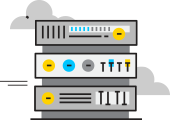DNS SPF Records play a critical role in the domain of email communications and cybersecurity. Standing for “Domain Name System Sender Policy Framework,” DNS SPF records are vital tools to combat spam and phishing attempts. They are designed to help mail servers differentiate between legitimate emails and malicious ones. Understanding DNS SPF records is crucial for anyone involved in managing email servers or administering domains.
The History of DNS SPF Records
DNS SPF records originated as a method to combat email spoofing, a technique often employed by spammers and phishers. The concept of SPF was first proposed by Meng Weng Wong in 2003, who sought to address the growing issue of unsolicited emails. In the years that followed, this initial idea was refined, standardized, and finally published as RFC 4408 by the Internet Engineering Task Force (IETF) in 2006. Over time, SPF has become a cornerstone of modern email validation mechanisms, alongside technologies like DKIM and DMARC.
DNS SPF Record: An In-depth Look
A DNS SPF record essentially is a TXT record in a domain’s DNS settings that specifies which mail servers are allowed to send emails on behalf of the domain. It helps recipient servers verify the authenticity of the incoming emails by checking if they originate from servers sanctioned by the domain owner.
When an email is sent, the receiving mail server can check the SPF record of the sender’s domain. If the originating server’s IP address is listed in the SPF record, the email is authenticated. If not, the email can be marked as spam or potentially dangerous.
The Internal Structure of a DNS SPF Record
An SPF record is composed of several parts:
- The
v=spf1tag: This indicates that the TXT record is an SPF record. - The list of IP addresses or domains authorized to send emails on behalf of the domain. These can be specified as individual IP addresses (like
ip4:192.0.2.0orip6:2001:db8::) or domains (likeinclude:example.com). - The
allmechanism: This specifies how the server should handle mail from IP addresses not listed in the SPF record. It can be prefixed with a-(fail),~(softfail),+(pass), or?(neutral).
For example, an SPF record may look like this: v=spf1 ip4:192.0.2.0 include:example.com ~all.
Key Features of DNS SPF Records
- Email Authenticity: SPF records enable email servers to authenticate incoming emails, minimizing spam and phishing attempts.
- Flexibility: They allow domain owners to specify exactly which servers can send email on their behalf.
- Improved Deliverability: Proper use of SPF records can improve email deliverability by reducing the chances of emails being marked as spam.
- Simple Implementation: SPF records are easy to implement, requiring only a TXT record in the domain’s DNS settings.
Types of DNS SPF Record Mechanisms
DNS SPF records are made up of mechanisms that define how the receiving mail server should handle incoming mail. Here are the major ones:
| Mechanism | Description |
|---|---|
all |
Matches all addresses. The prefix determines the response to the match (e.g., ~all for soft fail). |
ip4 |
Matches the provided IPv4 address or subnet. |
ip6 |
Matches the provided IPv6 address or subnet. |
a |
Matches the IP address returned by a DNS A or AAAA query. |
mx |
Matches the IP address returned by a DNS MX query. |
ptr |
Matches the hostname returned by a DNS PTR query. |
exists |
Matches if the provided domain name resolves to an address. |
include |
Includes the SPF record of another domain. |
Using DNS SPF Records: Problems and Solutions
One common issue with SPF records is the limitation of DNS lookup count. An SPF record may only cause up to 10 DNS lookups, which can be easily exceeded when using include and a mechanisms. Exceeding this limit may cause SPF validation to fail. To overcome this, you should optimize your SPF record by reducing the number of DNS lookups. Use IP addresses (ip4 or ip6) instead of domain names where possible.
Another issue arises from the use of third-party email services. If not properly included in your SPF record, emails sent through these services might be marked as spam. This can be solved by correctly adding these services to your SPF record with the include mechanism.
Comparisons with Similar Terms
While SPF is an essential part of email security, it’s not the only protocol that does so. Below are comparisons with similar protocols:
| Term | Description |
|---|---|
| SPF (Sender Policy Framework) | Specifies which servers can send mail on behalf of a domain. |
| DKIM (DomainKeys Identified Mail) | Adds a digital signature to the email header that can be verified by the recipient. |
| DMARC (Domain-based Message Authentication, Reporting & Conformance) | Builds on SPF and DKIM, specifying what should happen if an email fails SPF or DKIM checks. |
Perspectives and Technologies of the Future Related to DNS SPF Record
The concept of SPF is continuously evolving. Currently, there’s growing support for BIMI (Brand Indicators for Message Identification), which builds on SPF, DKIM, and DMARC. BIMI allows organizations to display their logo in customers’ inboxes, enhancing brand visibility and trust.
Moreover, with the increasing adoption of IPv6, there is a need to ensure that SPF records are compatible and ready for IPv6 addresses.
DNS SPF Records and Proxy Servers
A proxy server can complicate the functioning of SPF records if it is used to send emails. In such cases, the IP address of the proxy server must be included in the SPF record to ensure successful email delivery. If not, the emails sent through the proxy may fail SPF checks and potentially be marked as spam.
Proxy server providers like OneProxy can support the implementation of SPF records by providing consistent and static IP addresses that can be used in the SPF record of a domain.
Related links
For more information about DNS SPF records, check the following resources:




